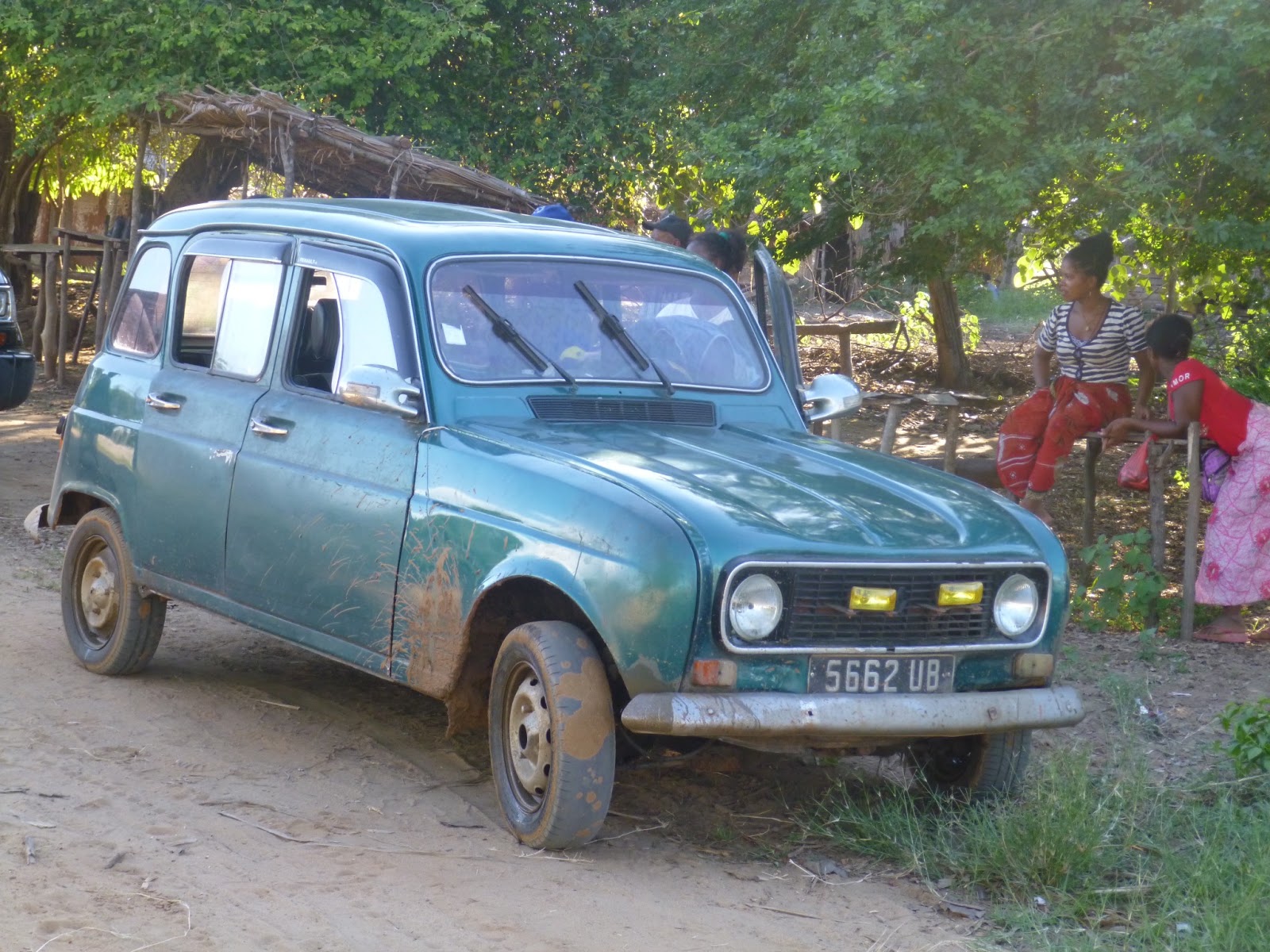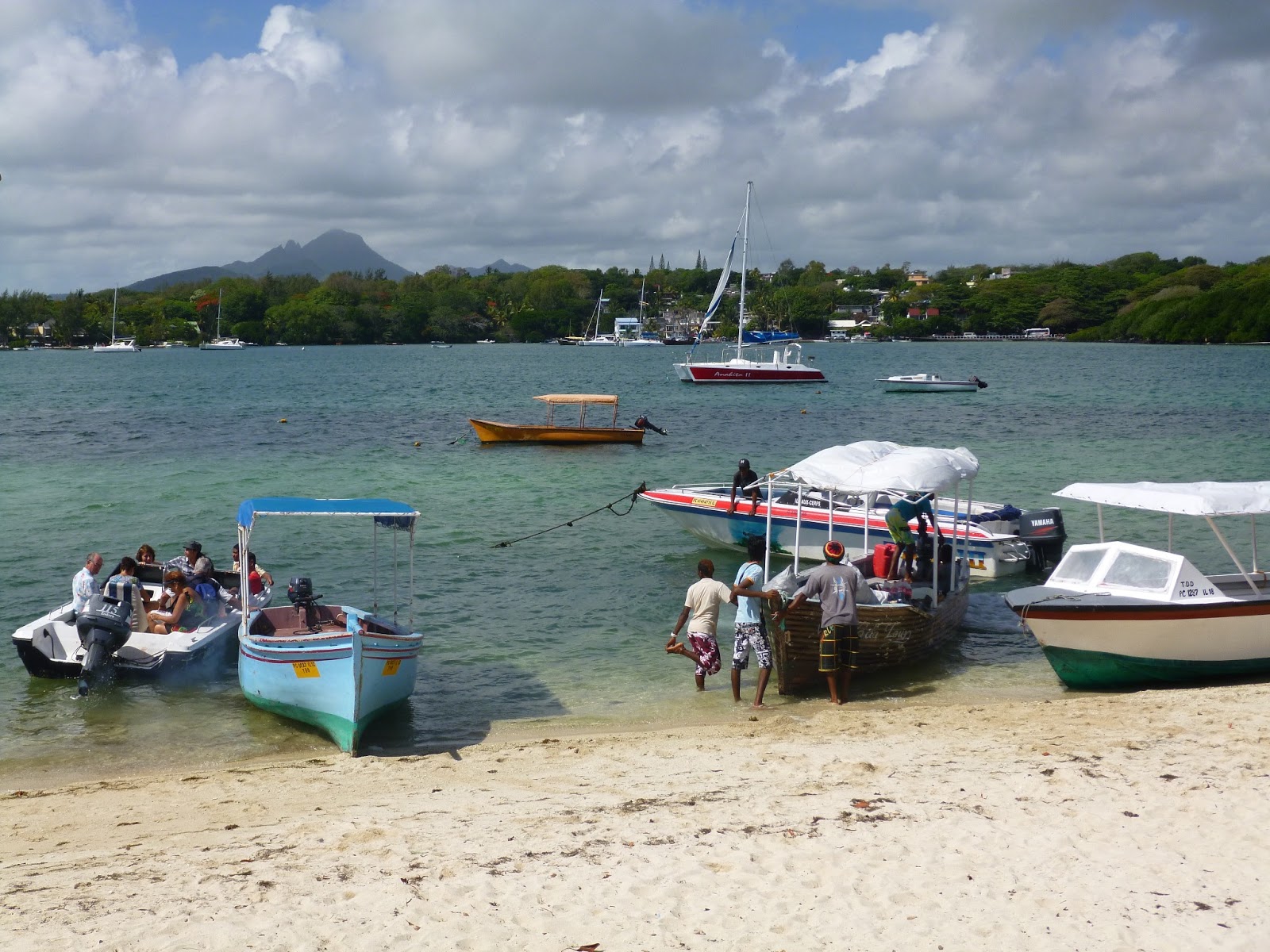Tonga soa!
We flew into the capital, Antananarivo (or just "Tana"), on the 1st March. Undoubtedly as a result of living on the small island of Reunion for the past six months, the first thing which struck me as we approached Madagascar was its size. It's huge! It also appeared to be very wrinkly. Changing our money was interesting: it's roughly 3000 Ariary to 1 Euro and the biggest denomination is 10000Ar. Keeping it all in my purse wasn't really an option!
Vous allez où?
Keen to be off on our adventures, the next morning we set off to take the taxi-brousse to Morondava on the West coast. Anyone who has been to Madagascar will know all about this infamous mode of transport. Taxi-brousses are a form of long-distance public transport in the shape of minibuses in varying states of roadworthiness. Due to the size of Madagascar, and the size and state of its roads, taxi-brousse journeys can take over twenty-four hours. Luckily, we were only going to Morondava, so our journey was to last only fifteen. Our first shock came when, arriving at the bus station our taxi was bombarded by a crowd of shouting Malagasy men, who ran alongside us, holding on to the windows, clamouring to know our destination. Our driver, thankfully, found us a taxi-brousse that was going to Morondava without us needing to get out and fight through the throng; we later realised that our assumption that each taxi-brousse co-operative ran a different route was completely incorrect, which explained the frantic vying for custom as we arrived.
Because we had had to arrive in the morning in order to reserve seats on an afternoon taxi-brousse, and because we wanted to play it safe and didn't fancy wandering far with our luggage, we spent the next five hours people-watching at the bus station. People were constantly milling around, trying to sell everything from neon-coloured hair scrunchies to portable radios, and Aly soon attracted a crowd of curious children (and a few adults) with her polaroid camera. The public toilets were an interesting surprise: a woman behind a counter asks you to, well, specify the purpose of you toilet visit, charges you either 100 or 300 Ariary accordingly (approximately 3p or 10p) and sends you to the corresponding cubicle which has neither lock nor toilet paper.
 |
| Loading up the taxi-brousse |
C'est le système!
To continue our adventures on Madagascan transport, the next day we hired a taxi to take us to the famous Allée des Baobabs. The car was small and rickety, like seemingly every other vehicle in Madagascar, but more worryingly did not appear to have a petrol tank. I'll explain. Five minutes after leaving we pulled into a petrol station. Our driver got out with four empty plastic Coca-Cola bottles in hand and got them filled at the pump. He then placed them in the space between the driver and passenger seat, poked a rubber tube through a hole in a lid, screwed this onto one of the bottles and set off. "C'est le système", he cheerfully explained to us, and it was true that we saw a lot of people filling up old plastic bottles at the petrol stations we passed.
Our driver was friendly and very funny, but spoke very little French. His driving skill, however, made up for it. He got us through muddy puddles as deep as the height of his wheels and some so large there were ducks swimming in them, not to mention the constant bumps and potholes, and we successfully arrived in time for the sunset.
Cue lots of photo-taking and admiring of these huge, impressive trees. They really make for a stunning landscape! We wandered a little way down the road, and happened across a small village where women were trying to sell wooden carvings of baobabs to the vazaha (foreigners). What interested us more was the group of small boys who had a chameleon on a stick: Aly had been dying to see a chameleon, and couldn't resist picking it up and stroking it. We were then, of course, immediately bombarded with requests for money or sweets as payment, so Aly calmly pulled out a packet of honey-flavoured throat lozenges and proceeded to distribute them one by one to the children. The women selling the carvings were having none of it, and barged in to get their share, and poor Aly had to surrender the entire packet, leaving us with nothing else to bargain for photos...ah well.
The journey back was much the same as the journey there, except for the driver's frequent and rather worrying exclamation that there were "pas de freins" (no brakes). I'm putting it down to bad French, because we survived with no problems!
 |
| Changing the fuel bottle... |
Our driver was friendly and very funny, but spoke very little French. His driving skill, however, made up for it. He got us through muddy puddles as deep as the height of his wheels and some so large there were ducks swimming in them, not to mention the constant bumps and potholes, and we successfully arrived in time for the sunset.
 |
| Our trusty taxi |
The journey back was much the same as the journey there, except for the driver's frequent and rather worrying exclamation that there were "pas de freins" (no brakes). I'm putting it down to bad French, because we survived with no problems!
 | ||
Allée des Baobabs and zebu from the village
|














